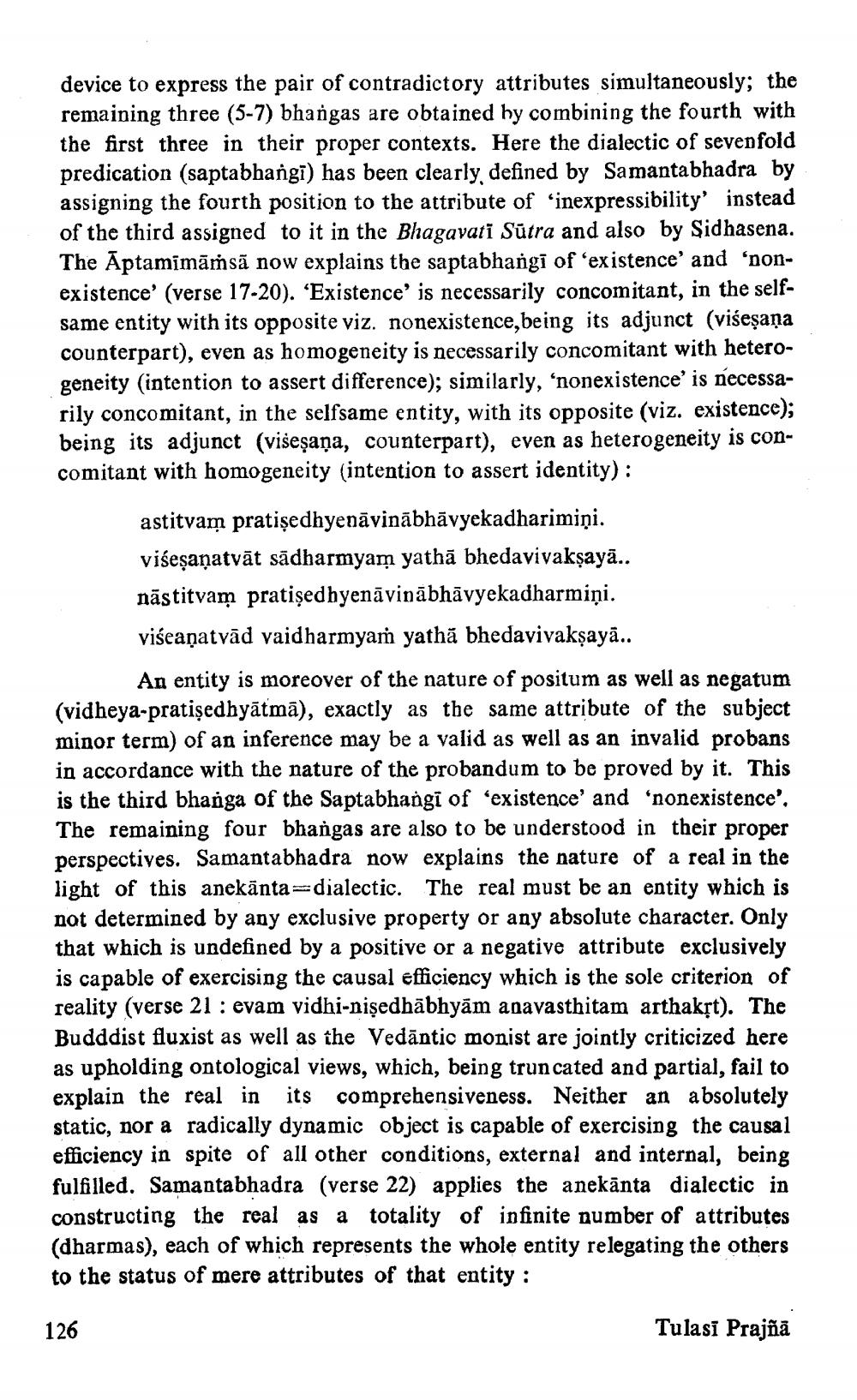________________
device to express the pair of contradictory attributes simultaneously; the remaining three (5-7) bhangas are obtained hy combining the fourth with the first three in their proper contexts. Here the dialectic of sevenfold predication (saptabhangī) has been clearly, defined by Samantabhadra by assigning the fourth position to the attribute of 'inexpressibility' instead of the third assigned to it in the Bhagavati Sūtra and also by Sidhasena. The Āptamīmāṁsā now explains the saptabhangī of 'existence' and 'nonexistence' (verse 17-20). “Existence' is necessarily concomitant, in the selfsame entity with its opposite viz. nonexistence, being its adjunct (višeşaņa counterpart), even as homogeneity is necessarily concomitant with heterogeneity (intention to assert difference); similarly, ‘nonexistence' is necessarily concomitant, in the selfsame entity, with its opposite (viz. existence); being its adjunct (višeşaña, counterpart), even as heterogeneity is concomitant with homogeneity (intention to assert identity) :
astitvam pratiședhyenāvinābhāvyekadharimiņi. višeşanatvāt sādharmyam yathā bhedavivakṣayā.. nāstitvam pratișed hyenāvinābhāvyekadharmiņi. viseaņatvād vaidharmyam yathā bhedavivakṣayā..
An entity is moreover of the nature of positum as well as negatum (vidheya-pratiședhyātmā), exactly as the same attribute of the subject minor term) of an inference may be a valid as well as an invalid probans in accordance with the nature of the probandum to be proved by it. This is the third bhanga of the Saptabhangi of 'existence' and 'nonexistence', The remaining four bhangas are also to be understood in their proper perspectives. Samantabhadra now explains the nature of a real in the light of this anekānta=dialectic. The real must be an entity which is not determined by any exclusive property or any absolute character. Only that which is undefined by a positive or a negative attribute exclusively is capable of exercising the causal efficiency which is the sole criterion of reality (verse 21 : evam vidhi-nişedhābhyām anavasthitam arthakệt). The Budddist fluxist as well as the Vedāntic monist are jointly criticized here as upholding ontological views, which, being truncated and partial, fail to explain the real in its comprehensiveness. Neither an absolutely static, nor a radically dynamic object is capable of exercising the causal efficiency in spite of all other conditions, external and internal, being fulfilled. Samantabhadra (verse 22) applies the anekānta dialectic in constructing the real as a totality of infinite number of attributes (dharmas), each of which represents the whole entity relegating the others to the status of mere attributes of that entity :
126
Tulasĩ Prajñã




